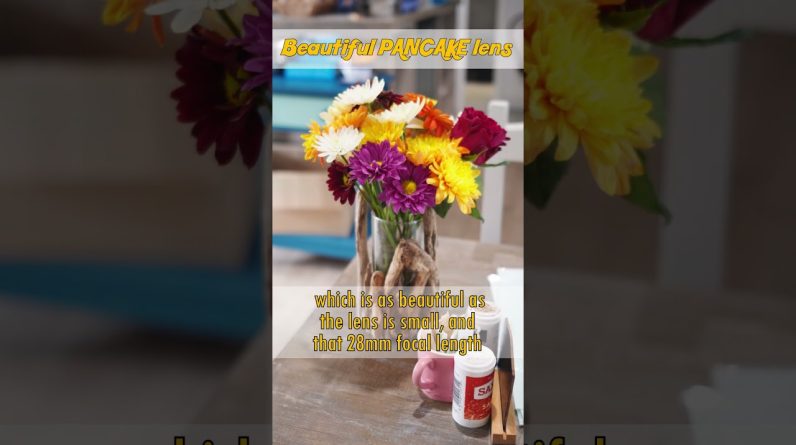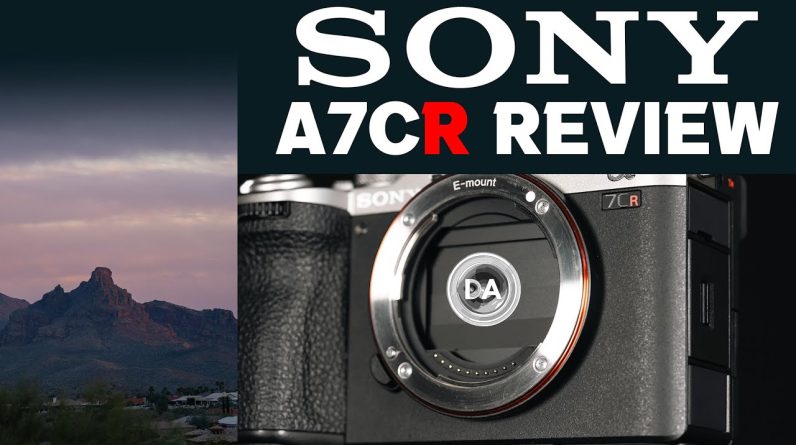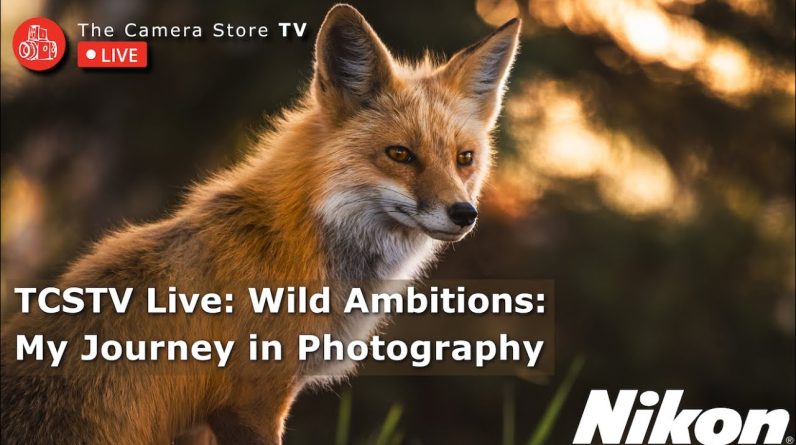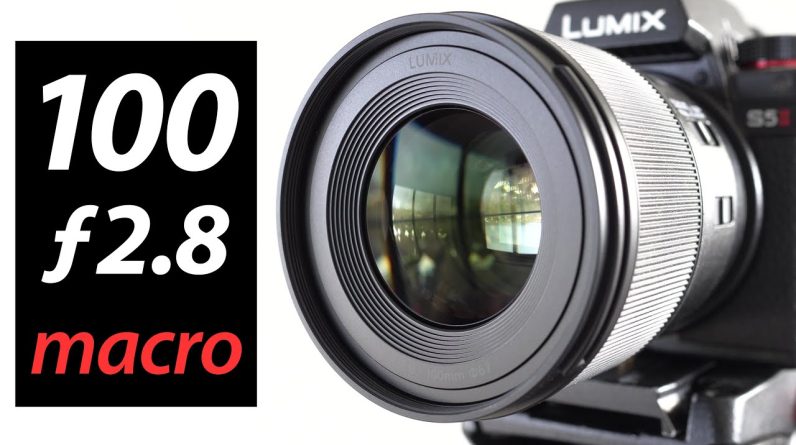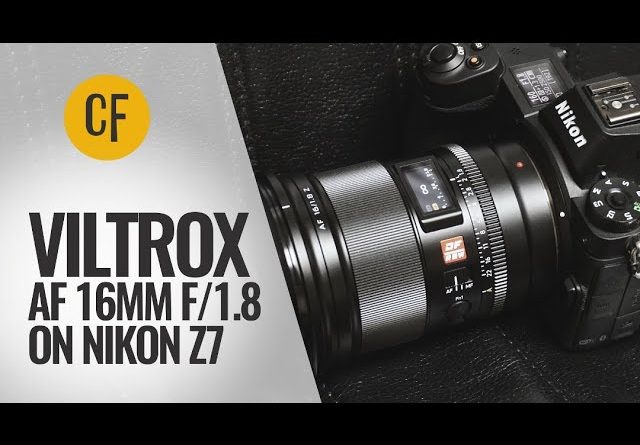Foreign Hi I'm Dustin Abbott and I'm here today To give you my definitive review of the New Sigma 50 millimeter F2 DN from their I series of lenses many of you told me That you weren't looking for another Premium 50 millimeter F 1.4 lens when I Reviewed the new Sony G Master lens and You said what you wanted was a high Performing compact 50 millimeter F 1.8 Lens well will F2 work for you Sigma is Adding to their Compact and premium I Series of lenses with the new 50 Millimeter f2dn this is coming for both Sony e-mount along with Leica l So will this new i50 as we'll call it Check all the boxes for you and what You're looking for well we'll find out In our definitive review today right After a word from our sponsor Today's episode is brought to you by Phantom wallet the minimalist modern Wallet that is now even better with the New Phantom X that is crafted from Aluminum right here in Canada it is 22 Percent smaller and 35 percent lighter While still making it easy to access Your cards and money when you need them Thanks to their unique Fanning mechanism You could even customize your wallet due To its modular design with accessories Like a money clip cash holder ID display And even chipolo and air tag tracking Integration visit
Store.phantomwallet.com to check out Their unique sizes Styles and finishes That span from aluminum to Wood to Carbon fiber and use code Dustin 15 for 15 off when you're ready to check out Let's talk about the build and the Handling of this lens in the big scale Of things this lens is what you would Call the medium option obviously it is Larger than a typical 50 millimeter F 1.8 I've got a can in here to step in For a Sony it falls in the middle Whereas I have the smallest of the 50 Millimeter F 1.4 options available and That's the samyang AF 50 millimeter F 1.4 Series 2 lens and so you can see That it slots nicely in between those Two things it is still very very compact But don't think it's going to be as Small as the typical nifty 50 and Certainly not as light It is however considerably smaller than Sigma's recent 50 millimeter F 1.4 DN Art series lens and as Sigma themselves Point out this F2 lens is 37 shorter it Is 50 lighter and as a price point it's About 220 dollars cheaper than the F 1.4 Art series lens so how small is that It's 70 millimeters in both diameter and Its length and it weighs in at that's 2.8 inches by the way it weighs in at 345 grams 12 ounces and it has a 58 Millimeter front filter size I will Quickly note on that that Sigma is
Elected to not standardize the filter Size in the I series lens so this filter Size is I think only shared with one Other out of nine or ten lenses and some Others have a 62 millimeter some of them Have a 55 millimeter front filter thread And so there certainly is you know some Variance when it comes to this Particular series that's either a good Thing or a bad thing depending on your Perspective you know the upside of that Is that you can design each lens and Just kind of let the design flow for Itself without having to force around a Shared size constraint but of course it Also means that you're unlikely to be Able to share filters across a number of These lenses It does have an AF MF switch here on the Side but it doesn't have a focus hold Button and really no other features Outside of an aperture ring and a focus Ring on the lens Barrel itself it has a Gasket here at the lens mount but no Internal seals which is kind of been the Standard for the I series lenses what is Here however is really beautifully Crafted it's a heart I'm hard pressed to Think of lenses that are nicer than These current I series lenses in terms Of just the overall design aesthetic There's a lot of really really great Textures things feel really good you can Tell that these lenses are crafted with
Some love and care for those that care About the aesthetic of that and that's Up to including the lens Hood which is a Cut above the lens hoods on any of Sigma's other lenses they're all metal They're beautifully ribbed it really Kind of feels like you've got a Separated off focus ring here that Happens to be the lens Hood but as a Byproduct there's a real kind of flow of Design here that often then I don't see In lens design where the lens Hood feels Like something that's been tacked on Kind of a a an afterthought rather than A part of a comprehensive design so I Really do appreciate sigma's care in Designing these lenses the fact that It's all metal does give you an option When it comes to your your pinch cap you Either have the typical print pinch cap Or you can use a magnetic cap that is Included though I will note it is hard To dislodge the magnetic cap if you have The lens Hood in place those of you that Aren't big fans of using the lens Hood You'll probably be more of a fan of Using the magnetic cap for the simple Reason that it pops off nice and easily When you have that exposed like that However the pinch cap is easier to Remove when you've got the lens hood on Because you can pinch in the middle Rather than having to reach for the side Of it
Now as noted the aperture ring and the Focus ring both of them move very nicely The aperture ring feels really really Good and precise in it the ring itself Has a really great feel to it I will Note that while you can lock it into an Automatic mode just by kind of a firm Detent there there is no d-click option Here and so it's all going to be in one Third stop to tense as a part of that The minimum Focus distance here is 45 Centimeters giving us a you know average At best 0.14 times magnification which Is weaker than the recent art series Lenses and it falls behind a lens like The Sony 50 millimeter F 2.5 which has a Much higher around 0.21 times and so not Necessarily a strength for the lens Though I will note that up close Performance is very good nice flat plane Of focus good contrast good detail and So it kind of makes up for things a Little bit on that front So what's here is really beautifully Made however I will note that it lacks a Few features relative to what has become The standard in the nicer Sony Mount Lenses Autofocus Here Comes via an STM or a Stepping motor and it has plenty of Power for most all applications that I Saw I saw only some very minor visible Steps in my hand test you can just see That Focus kind of happens in two
Sections rather than one progressively Smooth section but for all other Applications I really didn't see any Kind of stepping as a part of it that Can be a weakness for stepping Motors This is one of the better stepping Motors that I've seen both in speed and Power and just overall smoothness you Can see that Focus speed is really good Here and focus changes are near Instantaneous for photography purposes I Also saw a very good iaf tracking for Humans whether it was in kind of a Casual portrait setting or an event Setting I saw very good ief on animals As well one thing that I thought wasn't Maybe up to the par of some of these Recent higher end 50 millimeter F 1.4 Lenses that I've seen is that when I Tried to track null approaching the Camera and I turned the burst rate up on My a74 I found that there was a back Focus for about the first half of the Sequence and then it pulled up to the Right place and it remained constant There and so maybe not as quick and Focus acquisition in a tracking Situation as some of those better lenses I will also note of course as a Third-party lens if you're shooting on An A9 series or an alpha one your burst Rate is going to be limited at 15 frames Per second that's not just with this Lens that's with any third-party lens
Now when it comes to other video Tracking when I approached the camera I Saw smooth transitions I didn't see any Of those visible steps I felt like it I Picked up my eye pretty quickly after Coming back on frame also when doing Focus pulls they were very smooth and Quiet though you will see particularly If you look at the left side on the Window that there is some pretty obvious Focus breathing and so if your priority Is video Focus you might want to look at Something like the Sony 50 millimeter F 2.5 g because it might be a better video Option it's has the ability to de-click The aperture as dual linear Motors it is Going to be eligible for Focus breathing Compensation if you have a camera that Is so equipped and so it just gives you A little bit more flexibility when it Comes to video acquisition though for Stills and for you know normal video Work I was perfectly satisfied with what I saw here it got the job done and you Know even if I go back just a little bit I would have say that this was an Exceptional autofocus performance you Know relative to what I had seen Previously so overall my Impressions Walking away were very positive Now let's talk about image quality Because Sigma actually touts that this Little 50 millimeter F2 is as strong in The center and the mid frame wide open
As the art series lens though as we're Going to see on our image Quality Quality breakdown there's a little bit More Nuance maybe to add to that let's Dive in and let's take a look at the Overall Optical quality of the lens so We'll start by taking a look at vignette And Distortion so as you can see on the Distortion front there's really not a Whole lot to see here and so in this Area we're actually much better off than The new 50 millimeter F 1.4 DN there is However a fair amount of vignette and as You can see it penetrates quite far into The frame which is going to give images A little bit of a heavier look to them If you leave it uncorrected over here on The right you can see I've done a manual Correction here a pretty straightforward Plus one to deal with the Distortion and A plus 51 to deal with the vignette so That's about two stops of vignette and You can see I've moved the midpoint all The way over to allow that to brighten Up all the way into the middle of the Frame now of course there is a Correction profile that will clear Things up either end camera for raw or Video or excuse me for jpeg or video raw Files will be a correction profile that Will come to software which I have used Here and you can you can see here that Um you know the image feels has a quite A bit of a heavier feeling prior to that
Vignette correction after the correction It feels a little bit lighter a little Bit airier than what it does so I think In many situations you'll probably want To correct that vignette there'll be Some situations where it will be Flattering now there is some Longitudinal chromatic aberration we can See here that there's a little bit of Fringing particularly after the plane of Focus here uh taking a look from another Perspective you can see only a minimal Amounts of the magenta fringing but a Little bit more pronounced when it comes To the kind of green fringing after the Plane of focus you can see in this shot Here of congas that on some of these Shiny surfaces you're going to see a Little of that fringing there and then You'll see it a little bit when it comes To some of the bokeh highlight lights Just a little bit of outlining there Nothing too pronounced here though now As per usual we're using my Sony Alpha One 50 megapixels and showing you this At 200 magnification you can see that There's tons of Pop here in the center Of the frame great contrast wide open You really couldn't ask for much more There mid frame looks very good you can Also see here in this mid area going Down to here everything looking really Strong and then as we go to the corner We can see that there is a drop off it's
Not as sharp towards the edge of the Frame however it isn't quite as bad as What I thought the MTF suggested this is Really not a terrible performance Now we saw that that chart from Sigma Showed that wide open the F2 lens is Actually sharper than the F 1.4 lens at Least in the middle through the the mid Frame but if you do more of an Apples to Apples comparison you compare them both At f2 we can see that of the two I would Say that I would still give an edge to The art series lens by F2 it stopped Down to where it's a bit sharper that's Even more obvious here in the mid frame Which you can just see the the art Series lens just pops there at um at F F2 we can also see here that it has Higher performance and then down into The corners you can see that that Difference in being able to render fine Details look down like in this lattice Area here you can see that it's just Definitely more defined there the much More detail showing up from the art Series lens That's not to take anything away from This F2 lens because it is extremely Sharp and so even in this kind of casual Available light shot at f2 you can see It is just amazingly sharp there on uh Her face we can take a look into a more Of a landscape type shot or city shot Here you can see that there is tons of
Detail here in this shot and that it Looks strong even towards the edges of The frame in fact if I compare it to an F 5.6 image here really the only Difference is I see a little bit more Contrast from the F 5.6 result versus The F2 but without them side by side you Know frankly you would be really Hard-pressed to tell that difference I Mean they both look really really Fantastic so you've got a lot of optical Chops available from wide open on this Lens And in this case more of an Infinity Type landscape and you can see that There is just great detail all across The frame here I don't really see a weak Spot as I look across here I understand That the corners are as sharp as what The center is but this is not a bad Corner performance at all either and so This is a lens that really is quite Impressive in terms of the overall Sharpness now if I compare both of these Lenses at F 2.8 you can see that you Know in the center I would again I would Give a very mild Edge to the art series Lens the same is probably true of the Mid frame and down into the corners the Art Series has its biggest Advantage Though you know frankly both lenses look Quite good here but if I look at a few Other places in the spot yeah I'm going To say that there's a little bit more
Contrast for the art series lens but Frankly there's not a significant Difference between the two optically When I looked at side by side I didn't See a lot of difference between F2 and F 2.8 on this 50 millimeter F2 lens I saw More of a jump when you stopped on down To F4 and as you can see here contrast Has taken a serious bump forward in the Center of the frame also in the mid Frame showing just a higher detail you Can see that there's more detail in this Bill here and then down into the corners We can see now that we're starting to Get a really crisp looking result in the Corners as well there's a very minor Further burst forward at F 5.6 and we Can see by f8 you're not really getting Any further gains if anything I think Contrast is slightly reducing so your Peak is somewhere around F 5.6 on a Higher resolution body Our minimum aperture here is F22 and as Per usual on a high resolution body we Can see that we diffraction is just Robbing a lot of the contrast and Resolution so as per usual my Recommendation is don't go past f11 Unless you really really need to So as previously noted our overall Amount of magnification is not Particularly high but you can see that Our performance up close is quite good Good contrast good detail there if I pop
Onto a real world you know Three-dimensional object you can see It's rendering a lot of fine detail There and contrast is holding up quite Well even at very close Focus distances Now obviously your ability to compress a Background and blur it out at f2 is not Going to be what it is at F 1.4 we can See looking side by side here that the Quality of the blur is not radically Different but you can just obviously Achieve a much more of a blurring of a Background with a lens with an F 1.4 Aperture like the art series lens Here's a quick look at the geometry you Can see a little bit of that fringing That we saw previously there's a little Bit of a cat eye shape here towards the Edge of the frame if you stop down to F 2.8 you get basically all circular Shapes all across the frame at F4 that Continues to be the case we're not Really seeing much of the aperture Blades yet though you are starting to See just the beginning of that a little Bit more of that nonagonal shape out in The real world you can see that up close You have ability to blur out the Background quite nicely here's a shot Now where I've blurred the foreground a Little bit more outlining here as you Get towards a little bit more of a Medium distance you're not blurring Things out quite as much you know maybe
One of the disadvantages of that smaller Aperture there here's another shot of This lock but again at close Focus Distances you're blurring out a Background fairly completely and again I'm very impressed with the up close Performance there which is really strong One final shot here it shows just kind Of some different edges see a little bit Of that fringing I doubt anything that's Going to ruin any shots for you as we Move towards defocus it's pretty good There is just a little bit more of Outlining than what I would like overall However though I like the shot I like What this lens can do now when it comes To flare resistance we can see you can't Really tell because the image has been So resistant to any kind of uh ghosting Or veiling here but there's very bright Sun that's coming through this window That I've allowed into the frame you can See however for this shot though the Contrast is held up perfectly You can see from the still shot that the Sun is in the frame but there's not Really any kind of negative effect and Even when I'm panning across in video You just really don't see at different Angles any kind of ghosting or Veil Veiling if you stop on down you can see That that really continues to be the Case and this is a very very strong Flare resistance
Now when you're stopped down to f11 Here's a look at what you're going to Get as far as the Sunburst or sun star Effect that is there and again even just Against a flat blue sky here you can see That there's very little to see in terms Of any kind of ghosting artifact it's One final shot here that shows how it's Holding up really quite well again very Bright sun coming through the window Here in the sauna which is otherwise Fairly dim inside you can see that There's no nasty artifacts or flare Effects that are taking place there Because this lens has such high contrast I did find the color saturation was Really strong on it and so as you can See in this kind of setting we've got Really deeply saturated colors it looks Very nice and obviously very very good Detail because this lens has such high Resolution and contrast finally I did Have an opportunity because of a decent Night for stars to take a look at the Coma effect so you can see the center of The frame star points look really very Nice as we move towards the edge of the Frame they do start to become deformed There's another cluster of stars up here That you can see a little bit more very Slight kind of growing of wings there But again it is it's it's limited and so As a byproduct I would say overall That's a fairly good effect for
Controlling coma so certainly a lens That if I owned it and I had you know no And this was the focal length I wanted I Wouldn't hesitate to use this for Shooting the night sky very few Optical Weaknesses with this lens this is a Strong performance and so at the end of The day you can pretty clearly see that The this is a very strong little lens And particularly when it comes to the Optics the overall feel and quality the Lens the autofocus performance there is A lot of checks in the positive column For this lens and relatively few over in The negative at the same time however This lens does face a lot of very strong Competition at its 639 US dollar price Point we've already alluded to the Sony 50 millimeter F 2.5 g which is smaller Lighter and actually less expensive Though I will point it also has Two-thirds slower a stop maximum Aperture but of course it's also more Expensive at the moment than this Samyang lens the samyang is a very good Lens that as you can see it is Physically larger and a little bit Heavier but at the same time it has a Faster maximum aperture of f 1.4 so a Full stop faster and of course there are Other options out there as well and so I Think that will be kind of the key issue For Sigma is that if they're kind of Unique blend of you know beautiful
Design and Strong Optical performance And a you know a compact lens if that is Going to be attractive to the right kind Of buyer on the Leica front which I Always have to consider even though I'm Not a Leica shooter I think that this Lens makes even more sense there are Fewer options there of course Sony is Emailed as flooded at this point but There are fewer options on Leica it's a Really nice match for some of those Smaller bodies that are available there And of course as a price point it's Going to see a little bit more bargain Oriented there bottom line is that if You love the concept of the I series Maybe you have other lenses from the Series that you you have really liked Then I think that you'll love this lens It really does deliver beautiful Beautifully optically has great Autofocus and it has that really Charming build and aesthetic to it that Makes it a joy to use out in the real World I'm Dustin Abbott and if you look In the description down below you can Find linkage to my full text review There's also some buying links there if You'd like to buy one for yourself Linkage to follow me or drag on social Media to become a patron to get channel Merchandise if you haven't already Please like And subscribe thanks for Watching have a great day and let the
Light in [Music]

